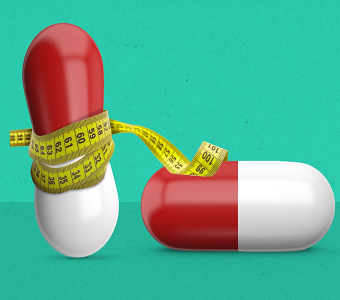Teva Pharmaceuticals (TEVA) purchased Auspex Pharmaceuticals this spring for $3.5 billion, primarily for access to the developmental SD-809 (deutetrabenazine), which was in mid-stage studies for the treatment of chorea associated with Huntington’s disease, tardive dyskinesia, and Tourette syndrome. But the larger pharma company has a competitor nipping at its heels.
Neurocrine Biosciences (NBIX) on Thursday reported positive results from a phase 3 trial of NBI-98854 in Tardive dyskinesia. Like Teva’s SD-809, NBI-98854 is a vesicular monoamine transporter 2 (VMAT2) inhibitor. Tardive dyskinesia (TD) is a movement disorder characterized by repetitive and uncontrollable movements of the, lips, face, tongue, and extremities, generally a result of treatment with existing medications for conditions like schizophrenia, major depressive, and bipolar disorders. According to Teva, some 500,000 people in the U.S. are affected by TD.
After 6 weeks of treatment, patients receiving NB-98854 (80mg once daily) in the KINECT 3 study had a statistically significant change from baseline in the Abnormal Involuntary Movement Scale (AIMS) compared to placebo. The AIMS rating at week 6 was reduced by 3.1 points (Least-Squares Mean) more than placebo (p<0.0001). A lower 40mg dose also outperformed placebo, though neither dose topped the control group on a key secondary endpoint, the Clinical Global Impression of Change (CGI-TD). Both doses achieved this secondary endpoint in a per-protocol analysis, which excluded subjects whose plasma concentrations of NBI-98854 were below the lower limit of quantitation.
Cross-trial comparisons are fraught, but a glance at Teva/Auspex’s own phase 3 Tardive Dyskinesia study, called ARM-TD, suggests Neurocrine may have an edge in efficacy: The primary endpoint in ARM-TD was also a change in the Abnormal Involuntary Movement Scale (AIMS) from baseline to end of therapy. Patients taking SD-809 achieved an improvement of 3.0 points on the AIMS score, compared to 1.6 points for placebo-treated patients (p = 0.0188). That placebo-adjusted 1.4 point difference comes up shy of NB-98854’s 3-point benefit, though with some caveats. Auspex’s ARM-TD study lasted 12 weeks — 6 weeks of dose titration and 6 weeks of treatment — versus just 6 weeks for Neurocrine. Teva’s study was about half as large as well, and it will be important to examine baseline characteristics before drawing any real conclusions.
Neurocrine still has to to complete a long-term safety study of NB-98854 before submitting the drug for regulatory approval. The FDA already accepted the New Drug Application for for SD-809 in chorea associated with Huntington disease, putting that approval decision in mid-2016.




